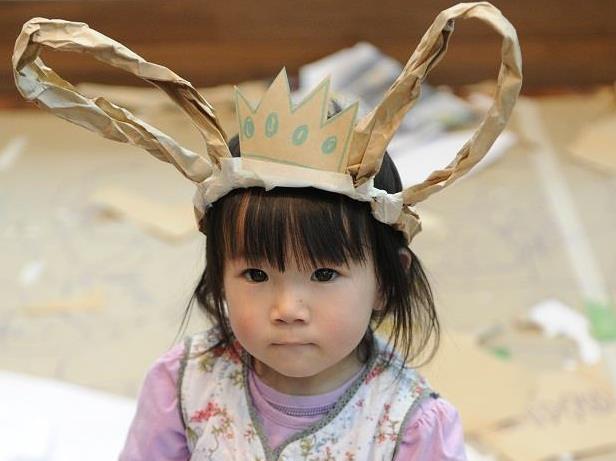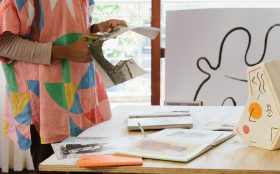Image via Polyglot
It’s a conversation with a preschool teacher 12 days into our residency in Minima Sanruki that reminds me of the deeper reasons we are here. ‘The town may be rebuilding, but in our minds and hearts we still suffer.’ Her face bears the weight of her loss: four years ago her husband didn’t come home. His body is still missing.
The preschool is on a hill. It was the appearance of a truck and trees at the front of the tidal wave that sent her and the fifteen children still at the nursery scampering higher into the hills where they sat with no water, or food, or phone… waiting. It was three days before the teachers knew how many students had survived.
This is just one of the many stories held in peoples memories, embedded in this landscape, forever a part of this town’s history.
What was once a thriving town is now an empty space in front of the ocean. Most of those who have stayed are still living in temporary housing. The actual numbers shift and change in stories: the preschool teacher said today that half of the children are in temporary housing; someone else told us that 90,000 people in the Tohoku Region are still without a home. The manager of the temporary housing tells us it will be another two years before homes will be rebuilt… that will make it six years of living in a small portable box.
May 2015 is my third visit to Minami Sanruki since the earthquake and tsunami of March 2011. The first time, six months after the disaster, we saw the piles of people’s lives heaped up in eight-meter-high stacks: cars, houses, and belongings, people walking through the remains, searching for personal items that may be important to someone.
‘The tsunami took everything that was man-made, and left what nature had made.’
Eighteen months later the piles had mostly gone, leaving behind deserted barren flat land. Some people had only just left the school halls they had been camping in, for the temporary housing that they still call home. And now: walls against the ocean are being built, the land raised by seven meters – the height of one of the evacuation centres over which the tide rose and flooded, taking most of the people who had fled to safety on its roof top with it…
So what was once a town is now a work site: an army of trucks carrying soil from the hills to build up the flat; rollers, cranes, diggers, front-end loaders; men directing traffic, everybody rebuilding, dust, noise, heavy traffic.
Slowly, new restaurants and services are creeping out from the temporary shopping village into the edges of what was once the town; but most are waiting for the new landscape to be built.
The first time I came to Minami Sanriku with Polyglot it was for three days. We brought puppets and a workshop. The second time, in 2103, we invited the students from three primary schools to imagine and build from cardboard their dream houses. With these works we created an installation, building a version of ‘We Built This City’, one of Polyglot’s interactive play spaces, for the community to come in and play in.
This time we came with materials and asked for a story. We collaborated with Acchi Cocchi, a Japanese company from Yokohama that has been presenting café concerts – great coffee and classical music – to the temporary village communities since 2011. On behalf of Polyglot theatre, Bernard Caleo – a comic artist from Melbourne – Dan Goronzy, and myself teamed up. We had heard that the shift into temporary housing had separated elders from their families, as the units were too small for everyone to live together. Our project aimed to create a drawbridge between the elders in the temporary villages and the young in the schools; and to draw a bridge between Australia and Japan, Melbourne and Minima Sanruki.
The underlying philosophy of Polyglot’s work is that kids are the boss: we let them tell us what happens next. To this end, Bernard introduced us to the Kamishibai form of story telling, which became our underlying form for this project. Kamishibai, or ‘paper theatre’, is a form of storytelling which developed in Japan in the 1930s. A wooden box is the stage, the actors are a series of illustrated cards, The storyteller narrates the action as he or she removes each card, revealing the next scene.
To start with we held two café concerts in the temporary villages: a morning tea of coffee and local treats, a classical music concert and then an invitation to the residents to share with us a story or a song. Bernard drew the stories as they sung them to us. Once they understood what we were doing, directions flew as to what should be in the picture: no not like that – bigger, smaller, more round. ‘What does an Oni look like, we ask? ‘Like him!’ a cheeky man points to our production manager. We had two fabulous mornings of much laughter and fun, song and smiles…
The story that both groups of residents gave us was the story of Momotaro (peach boy). We took this to Irya Elementary School and showed the students the drawings Bernard had made. Then we asked… ‘Tsugi wa’? (What happens next?)
In a very quick 90 minutes we presented a classical music concert, the story from the elders, and a workshop developing the students’ ideas into images. The first day with the Grade 3 and 4 students the story was developed and drawings were made. In the afternoon we developed their drawings into contemporary Kamishibai boards, with moving parts and pop-out puppets.
Day two was with the Prep and Grade 1 students. We showed them the work from the day before and then had them trace around their bodies onto large pieces of tyvec. Then they coloured themselves in to become the villagers in the story. On day three, the Grade 5 and 6 students created the end of the story and designed large puppets and set pieces.
The education system in Japan (from what we understand) is very rigid, with a great importance given to all children learning the same thing at the same time. The local Minister for Education acknowledged to us in a meeting that the arts were powerful in the healing process, but he finds it hard to fit extra curriculum activities into the tightly managed schedule.
Our challenge was to get any time at all with the children, as they had fallen behind with their schoolwork because of the disaster so there was pressure for them to catch up.
We were offered a brief amount of time with the school that had been least affected. Because of these constraints we hadn’t been able to make a time where we could show the children the outcome of their work, but …a small comment I made was overheard by a teacher, which led to a quick performance being presented after school as the children were waiting to catch their bus (nothing like a deadline to get work finished).
Then about 20 of the children also attended a BBQ held the next day with the Australian embassy and town councillors, where we also presented the new work. The residents from the temporary village had been invited to the BBQ, but transport is difficult… however one resident came especially to see what ending the children had made so she could go back and tell the others.
The next week was spent taking the story – begun by the elders and completed by the elementary students – to the kindergartens. Polyglot ran a drawing workshop, Acchi Cocchi presented a short music concert, and then we all performed the new story. The children were so focused and immersed in everything we offered them: again, it was a joyful and rewarding experience. The predominate feedback we received from both the primary school and the kindergartens was about how wonderful it was to see the children smiling…
‘Minami Sanriku has not fully recovered from the tragic disaster. Some of the children in our nursery school are still forced to live with their family in the temporary housings. Despite the harsh conditions, children are living their lives to the fullest, and the staffs are encouraged by those spirited children.’ [taken from a thank you letter from the staff of Natari Nursary School]
Art is a powerful tool.
Its simplest outcome: the creation of smiles and joy through participation in art in the school for a few days, and then seeing that ripple outwards into the teachers, parents and community.
The asking of ‘what happens next’ and inviting the students to draw and build their answers, reminds participants that they have agency: that there is a possibility not only to imagine or reimagine a future, but also to be able to act on those imaginings.
On a more complex level, art has the potential to help replace traumatic memory with new experiences and, with focused attention, it can help transform and release trapped subconscious memories.
And then there is the importance of a community knowing that they are not forgotten: that there are people from other places in the world who remember and care enough to come and visit.
‘I am deeply moved by your tender heart and I would like to extend my sincere appreciation as a Japanese for caring so much about the tsunami devastated regions in Japan’ Mikako Atsuchi and the Acchi Cocchi staff
These stories are important, the people of Minami Sanruki are grateful that we return, that we remember them, that they are not forgotten. Since this disaster there have been others; Nepal, Vanuatu and there will be more… and as they fall out of the media cycle it is important to remember that people’s lives have been stopped, their dreams, homes and often families shattered.
Recovery takes time.





